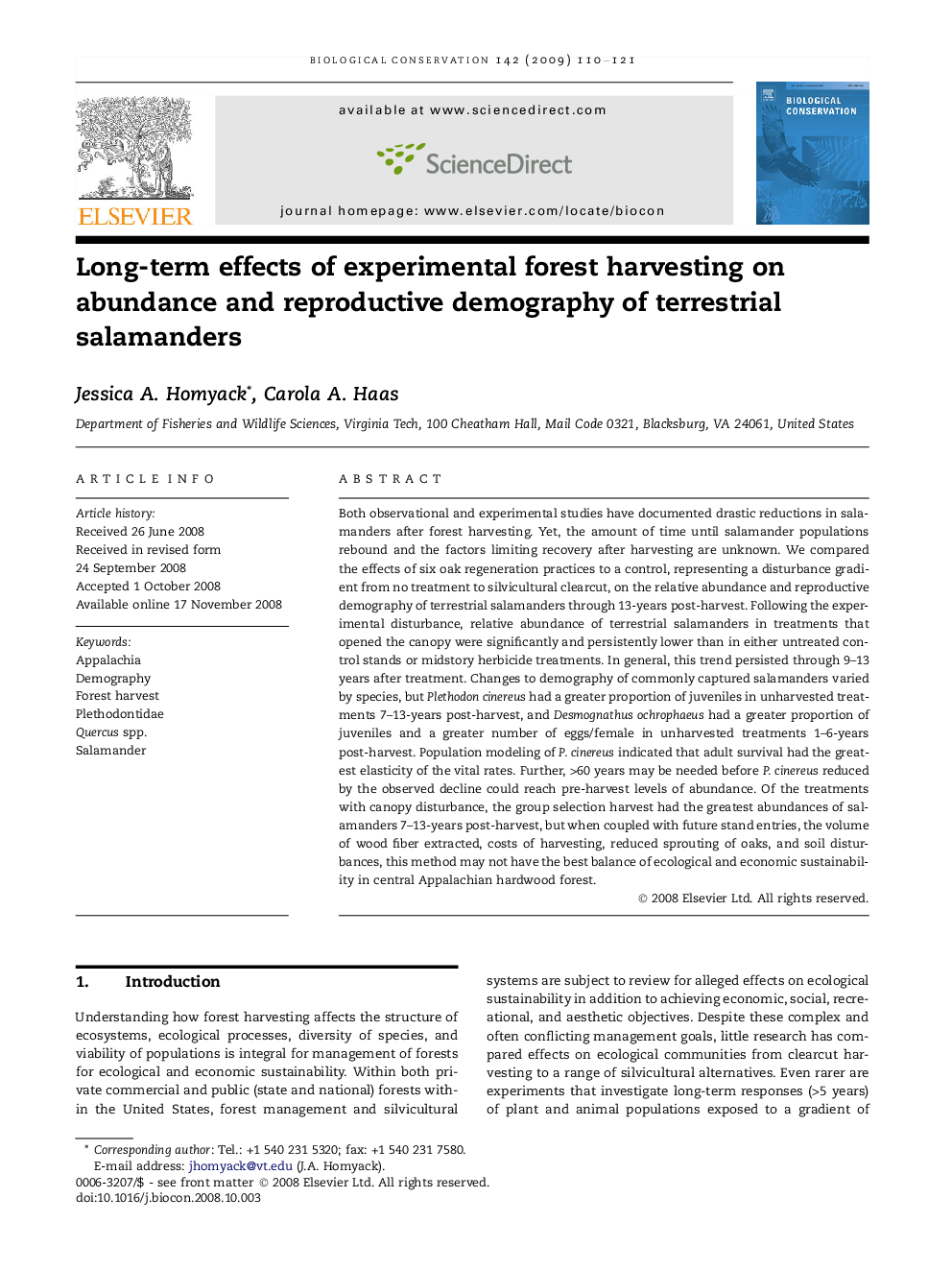| کد مقاله | کد نشریه | سال انتشار | مقاله انگلیسی | نسخه تمام متن |
|---|---|---|---|---|
| 4386759 | 1304577 | 2009 | 12 صفحه PDF | دانلود رایگان |

Both observational and experimental studies have documented drastic reductions in salamanders after forest harvesting. Yet, the amount of time until salamander populations rebound and the factors limiting recovery after harvesting are unknown. We compared the effects of six oak regeneration practices to a control, representing a disturbance gradient from no treatment to silvicultural clearcut, on the relative abundance and reproductive demography of terrestrial salamanders through 13-years post-harvest. Following the experimental disturbance, relative abundance of terrestrial salamanders in treatments that opened the canopy were significantly and persistently lower than in either untreated control stands or midstory herbicide treatments. In general, this trend persisted through 9–13 years after treatment. Changes to demography of commonly captured salamanders varied by species, but Plethodon cinereus had a greater proportion of juveniles in unharvested treatments 7–13-years post-harvest, and Desmognathus ochrophaeus had a greater proportion of juveniles and a greater number of eggs/female in unharvested treatments 1–6-years post-harvest. Population modeling of P. cinereus indicated that adult survival had the greatest elasticity of the vital rates. Further, >60 years may be needed before P. cinereus reduced by the observed decline could reach pre-harvest levels of abundance. Of the treatments with canopy disturbance, the group selection harvest had the greatest abundances of salamanders 7–13-years post-harvest, but when coupled with future stand entries, the volume of wood fiber extracted, costs of harvesting, reduced sprouting of oaks, and soil disturbances, this method may not have the best balance of ecological and economic sustainability in central Appalachian hardwood forest.
Journal: Biological Conservation - Volume 142, Issue 1, January 2009, Pages 110–121